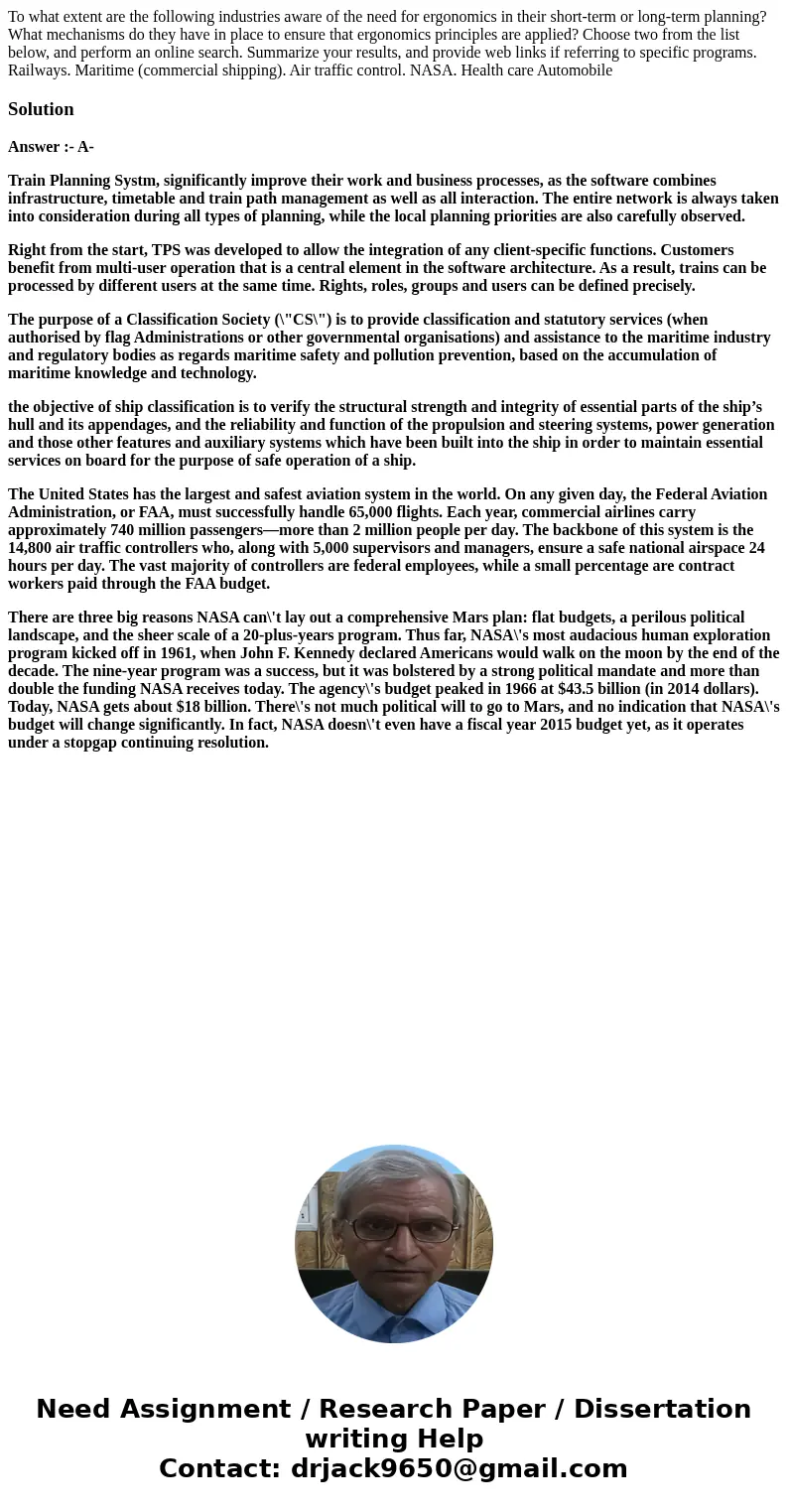To what extent are the following industries aware of the nee
Solution
Answer :- A-
Train Planning Systm, significantly improve their work and business processes, as the software combines infrastructure, timetable and train path management as well as all interaction. The entire network is always taken into consideration during all types of planning, while the local planning priorities are also carefully observed.
Right from the start, TPS was developed to allow the integration of any client-specific functions. Customers benefit from multi-user operation that is a central element in the software architecture. As a result, trains can be processed by different users at the same time. Rights, roles, groups and users can be defined precisely.
The purpose of a Classification Society (\"CS\") is to provide classification and statutory services (when authorised by flag Administrations or other governmental organisations) and assistance to the maritime industry and regulatory bodies as regards maritime safety and pollution prevention, based on the accumulation of maritime knowledge and technology.
the objective of ship classification is to verify the structural strength and integrity of essential parts of the ship’s hull and its appendages, and the reliability and function of the propulsion and steering systems, power generation and those other features and auxiliary systems which have been built into the ship in order to maintain essential services on board for the purpose of safe operation of a ship.
The United States has the largest and safest aviation system in the world. On any given day, the Federal Aviation Administration, or FAA, must successfully handle 65,000 flights. Each year, commercial airlines carry approximately 740 million passengers—more than 2 million people per day. The backbone of this system is the 14,800 air traffic controllers who, along with 5,000 supervisors and managers, ensure a safe national airspace 24 hours per day. The vast majority of controllers are federal employees, while a small percentage are contract workers paid through the FAA budget.
There are three big reasons NASA can\'t lay out a comprehensive Mars plan: flat budgets, a perilous political landscape, and the sheer scale of a 20-plus-years program. Thus far, NASA\'s most audacious human exploration program kicked off in 1961, when John F. Kennedy declared Americans would walk on the moon by the end of the decade. The nine-year program was a success, but it was bolstered by a strong political mandate and more than double the funding NASA receives today. The agency\'s budget peaked in 1966 at $43.5 billion (in 2014 dollars). Today, NASA gets about $18 billion. There\'s not much political will to go to Mars, and no indication that NASA\'s budget will change significantly. In fact, NASA doesn\'t even have a fiscal year 2015 budget yet, as it operates under a stopgap continuing resolution.

 Homework Sourse
Homework Sourse